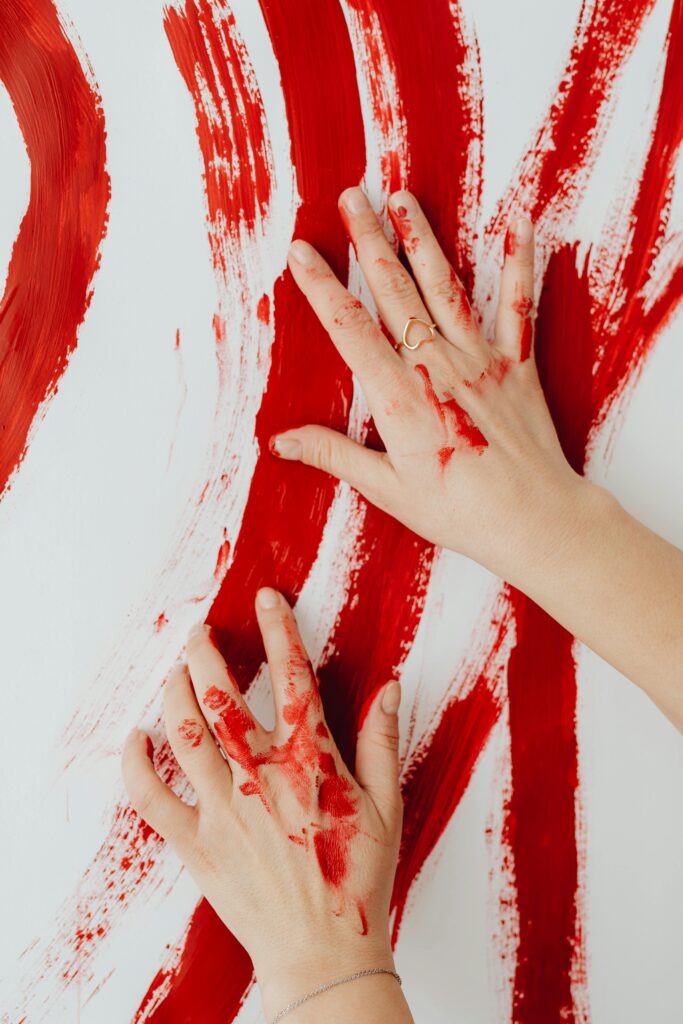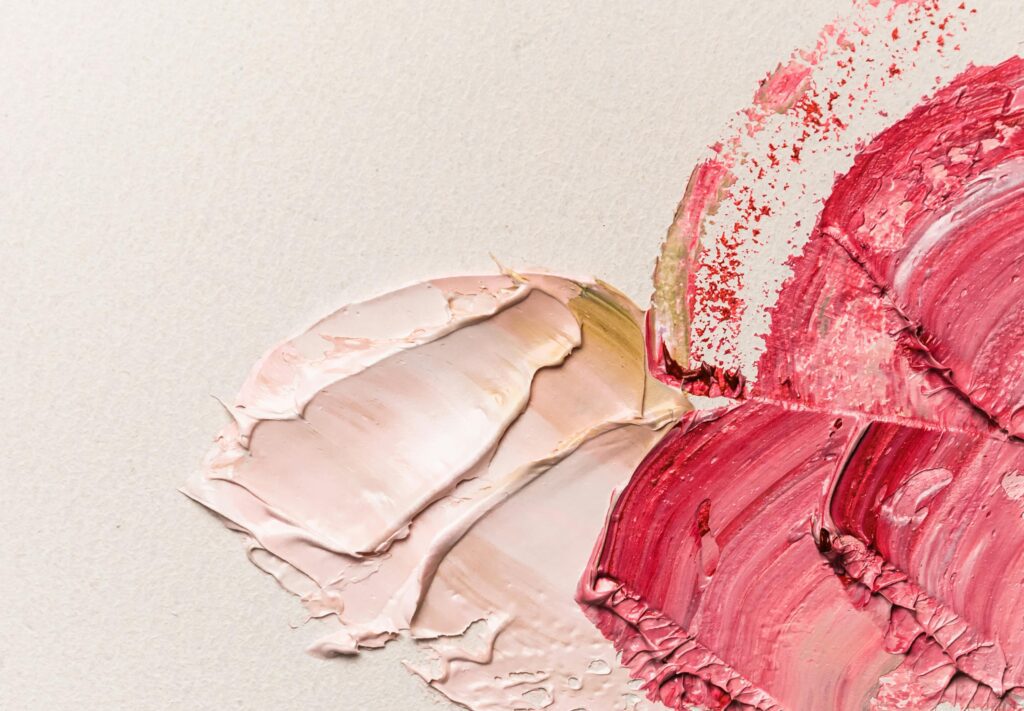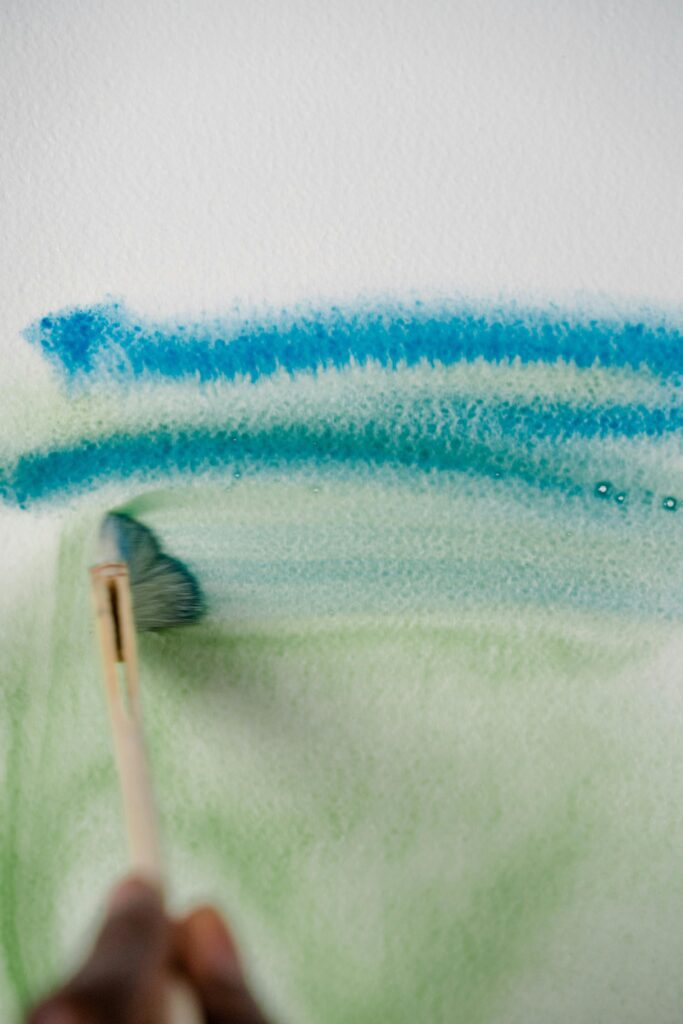The Step Most Artists Skip Before Applying

They say the smartest artists don’t just apply, they study. And not in an academic sense, but in a deeply practical one. They look at who’s behind the decisions before they ever hit submit. That single habit can turn what feels like a guessing game into a strategy that actually works.
Most artists treat applications like sealed envelopes , send, wait, hope. But if you’ve ever wondered why some artists seem to get shortlisted again and again, it’s rarely luck. They’re reading between the lines. They notice who’s on the jury, what kind of work those jurors support, and how their own portfolio aligns with that ecosystem.
Reverse engineering an application doesn’t mean changing your work to fit someone’s taste. It means understanding context , the same way a chef studies who’ll be at the table before crafting a menu. You’re not pandering, you’re being intentional. And that shift can quietly multiply your chances of being seen for what you actually do best.
The truth is, every jury leaves clues. You can learn a lot from the kind of artists they’ve selected before, the language they use in their statements, even the institutions or shows they’ve been part of. Once you start reading those signals, you stop feeling powerless and start feeling like a participant in your own visibility.
This approach doesn’t just improve your applications, it reshapes your confidence. You begin to send work that fits naturally rather than forcing it into spaces that were never meant for it. Suddenly, rejection feels less like a judgment and more like information.
In this guide, we’ll break down how to do that with precision and ease , from reading juror backgrounds to spotting alignment patterns and shaping your materials accordingly. No manipulation, no guesswork, just smart positioning that helps your art land where it’s meant to.

Don’t Just Apply, Investigate
Every open call looks shiny at first glance. The visuals, the promise, the deadlines , it all feels urgent. But before you hit “submit,” pause and do something most artists skip: check who’s behind the decision. Look at the jury panel, read their bios, and see what kind of art they champion. This isn’t detective work, it’s basic alignment. You’re simply figuring out if the people reviewing your work are likely to connect with what you do.
You’ll start noticing patterns the more you do this. Maybe a juror runs a space that focuses on conceptual installation, while your strength lies in intimate figurative pieces. That’s not a mismatch of quality, it’s a mismatch of focus. Knowing that early saves you time, energy, and submission fees.
Researching jurors also teaches you subtle cues , the tone of the exhibition, the kind of statements that land, and even the preferred formats. It’s a small effort that often shifts your mindset from random applying to targeted connecting.
Think of it like showing up to the right conversation rather than shouting in a crowded room. You want to be where your work naturally fits, not where it struggles to be understood.
Artists who do this regularly report feeling more confident, less burnt out, and more in control of their visibility. And once you get the hang of it, this becomes second nature , a quiet habit that guides every opportunity you pursue.
So, the next time you open an application form, don’t rush to fill it. Start with curiosity. Who are you actually talking to?
Read Their Work, Not Just Their Bio
Most artists stop at a juror’s short introduction , “curator at X gallery,” “director of Y residency.” But what you really want to know is how they think. Search for articles they’ve written, interviews they’ve given, or exhibitions they’ve curated. The language they use will tell you a lot about what excites them.
Some jurors love experimentation, others value clarity. Some are drawn to themes of identity, while others lean toward form and materiality. You’re not changing your art to please them, you’re finding the overlap between your language and theirs. That’s what creates resonance.
For example, if a juror keeps mentioning “narrative layers” or “emotional texture,” and your artist statement focuses on technique alone, there’s a gap. You can bridge that by describing how your process carries story or emotion , still your truth, but tuned to the wavelength of your reader.
The best part? This kind of insight makes your applications feel more human. You stop writing generic lines like “my work explores” and start speaking directly to shared values. It’s like finally writing for someone who gets you.
That’s the real secret , the more you understand how jurors communicate, the easier it becomes to present your work in ways that actually reach them.
So, before you polish your next statement, read theirs first.
Spot Patterns in What Gets Chosen
Every selection list tells a story. Instead of scrolling through past winners and moving on, take a moment to analyze them. What connects the chosen artists? Is it tone, subject, material, or message? Are there recurring themes like sustainability, identity, or abstraction?
Once you start noticing these links, the guessing game disappears. You’ll begin to see that some calls naturally attract conceptual voices, while others favor narrative or craft-based work. Knowing that can completely reshape where you invest your time.
You might realize that an opportunity that looked prestigious on paper just doesn’t align with what you create. Or you might spot a pattern that mirrors your own practice , and suddenly a call that felt out of reach becomes exactly right.
This isn’t about chasing trends. It’s about finding ecosystems where your art already belongs. The artists being chosen reveal the aesthetic and philosophical direction of the jury, and your best move is to recognize when your work fits that rhythm.
It’s one of the simplest but most overlooked strategies: learn from the evidence right in front of you.
So next time you scroll past the announcement post, stop. Those names and artworks are your roadmap.

Match the Energy, Not the Style
Here’s where many artists overcorrect , they think alignment means imitation. But matching the energy of a selection doesn’t mean copying someone’s style. It means noticing the emotional or conceptual tone of what’s being chosen and framing your own work in a way that harmonizes with that tone.
For instance, if the selected artists consistently have bold, socially aware statements, and your work quietly explores memory or identity, you can lean into how your perspective contributes to that same conversation from a different angle. That’s how you build relevance without pretending to be someone else.
This also applies to presentation. If the jury favors polished, minimal portfolios, don’t send them a chaotic PDF. If they like storytelling and warmth, skip the hyper-formal tone. Every little decision , from sequencing images to choosing file names , shapes how they experience your submission.
It’s less about what you show and more about how you show it. You’re giving them a reason to linger longer, to connect dots faster, to remember your name.
Think of it as energy tuning. You’re not performing, you’re aligning frequencies. And once you learn to do that, you’ll never apply the same way again.
This is how thoughtful applications start to feel alive instead of generic.
If you’ve ever stared at a blank document trying to sound “professional” yet still like yourself, the Artist Statement Template Pack from Arts to Hearts Project is a quiet lifesaver. It helps you shape your words so they actually connect, not just tick boxes. Each template guides you to build statements, bios, and application texts that sound confident, specific, and true to your work. Instead of rewriting from scratch every time, you can tailor your voice for different juries without losing your essence. It’s one of those small upgrades that instantly makes your submissions look polished and intentional, especially when you’re applying to multiple calls or residencies at once.
Read Between the Lines of the Theme
Some open calls spell out their theme. Others wrap it in elegant, abstract language that leaves you guessing. Either way, the way a jury phrases the brief tells you what kind of thinking they admire. Are they calling for “fresh perspectives” or “sensitive interpretations”? Are they emphasizing “conceptual rigor” or “visual impact”? Those word choices aren’t random , they’re invitations.
When you understand how to decode that language, you can shape your submission to fit the emotional or intellectual tone they’re after, while still staying true to your voice.
For example, if the call highlights “experimental formats,” that’s your cue to include process images or installation shots. If it mentions “community engagement,” include a short note about the audience your work speaks to. You’re not forcing anything, just showing relevance.
Once you start applying this, you’ll notice your acceptance rate improve , not because your art changed, but because your communication did.
It’s surprising how many strong artists miss this step. They think the theme is a box to check, when in reality, it’s the lens through which the jury sees everything.
Read it slowly, underline key words, and let those guide your narrative. The answers are usually hidden in plain sight.
Tailor Your Statement to Their Vocabulary
A well-written artist statement doesn’t have to sound academic, but it should sound aware. If you’ve studied the jury’s language and tone, you can mirror that rhythm in your own writing. Not mimicry , resonance.
For example, if they often use words like “dialogue,” “gesture,” or “translation,” weave those ideas naturally into your own text. It helps your writing feel familiar to their way of thinking. That familiarity creates instant ease.
This doesn’t mean you lose your voice. It means you build bridges with words that already exist in their mental framework. It’s how clarity replaces distance.
Artists often underestimate this step, but jurors read hundreds of statements. The ones that stand out are those that flow easily, that sound like they belong in the same conversation as the rest of their world.
Once you get comfortable with this, your writing stops feeling forced. It feels intentional, conversational, and grounded.
So next time you rewrite your statement, don’t just fix grammar , match rhythm. You’ll feel the difference immediately.
Look for Overlaps Between Jurors
Sometimes the real insight isn’t in who the jurors are individually, but in how they fit together. A panel with a museum curator, an experimental artist, and a community organizer will evaluate differently from one with three commercial gallerists. Their mix tells you what kind of balance they’re trying to achieve , and how your work might complete that puzzle.
By studying overlaps, you start to understand collective taste. If two jurors have collaborated before, they likely share certain values. If one comes from academia and another from a residency background, that mix might mean they’re looking for conceptual depth paired with practical execution.
This kind of analysis doesn’t take long. Ten minutes on LinkedIn or a few exhibition credits can tell you what worlds these jurors operate in. The goal isn’t to impress them, it’s to understand the lens they’ll use when reviewing.
For example, a jury full of installation-based artists may appreciate process images, while one with more institutional curators may prioritize coherence and clarity. The combination shapes the scoring criteria, even when it’s not written down.
Once you start spotting these connections, applications stop feeling random. You realize each selection round is shaped by human chemistry, not just written guidelines.
When you understand that chemistry, you can position your work to feel like a natural fit within that dynamic. That’s where subtle strategy becomes second nature.
Use Past Shortlists as Research Material
Every shortlisted artist list is basically free research. It tells you who got close , whose work resonated but maybe didn’t take the final spot. And sometimes that list is even more revealing than the winners’. These artists are often experimenting in ways jurors appreciate but haven’t fully defined yet.
Take time to explore their portfolios. Notice the tones, themes, and materials they’re exploring. Notice, too, what might have held them back , was their documentation weaker, their statement less polished? The answers give you a realistic sense of what’s working and what could be improved.
This is where your strategy becomes data-informed. Instead of wondering what “good” looks like in the eyes of that panel, you see it in action. That clarity keeps you from over-editing your work or chasing vague perfection.
It’s also a way to build confidence. You start realizing your work isn’t “off” , it might just need to be presented better or directed toward a slightly different audience.
Artists who make this kind of observation a regular habit tend to waste less energy comparing themselves and more time refining their communication.
And over time, that simple research habit often leads to recognition, because your submissions start feeling intentional, not accidental.

Identify What the Jury Rewards , and Why
Every jury values something, even when it’s not stated outright. Some lean toward conceptual thinking, others toward craftsmanship, and some toward innovation. Understanding what that “something” is helps you decide whether it’s worth applying at all.
You can pick up clues in how they describe past shows or how they word the call. Phrases like “pushing boundaries” suggest risk-taking. Words like “refined,” “considered,” or “resolved” point to a preference for maturity and polish. These aren’t throwaway phrases , they’re insights into priorities.
Once you’ve identified what the jury rewards, you can emphasize those strengths in your application. If they value material experimentation, you might highlight your process more. If they focus on narrative, lean into the story behind the work. You’re not altering your practice, you’re spotlighting the parts that matter most to that audience.
Doing this builds trust. Jurors can tell when someone has done their homework and when someone’s just ticking boxes. The difference shows in how relevant your materials feel.
And the reward is mutual. They feel understood as decision-makers, and you feel seen as an artist who belongs in that conversation. That mutual respect is often what gets a submission remembered.
It’s less about pleasing them and more about aligning values. That’s where good applications start to stand out effortlessly.
Turn Rejection Into Field Notes
Every “no” you get after applying is feedback , even if nobody spells it out. The juror lineup alone gives you clues. Maybe your work was strong but didn’t align with their collective focus that year. That doesn’t mean you weren’t ready, it means it wasn’t the right mix.
Instead of closing the email and moving on, revisit who judged that round. See what they selected and what you sent. The contrast between those two often shows you where your next opportunity lies. Maybe you’re leaning too niche, or maybe you’re underselling your ideas in your statement.
Treat each rejection as a data point. Over six months, you’ll have a clearer view of where your work actually resonates , and where it doesn’t. That’s valuable knowledge most artists skip collecting.
This mindset also helps you build resilience without detaching emotionally from your work. You can stay proud of what you made while learning from how it was received.
Eventually, this habit builds intuition. You’ll start recognizing patterns of fit without needing to analyze so deeply. That’s when applying starts to feel purposeful again.
You’re no longer chasing approval, you’re gathering information , and using it to evolve strategically.
Use Alignment to Build Long-Term Relationships
Understanding juror alignment isn’t just for one application , it’s a way to build a professional network. When you see a juror whose vision aligns with yours, that’s a relationship worth nurturing beyond the open call.
You might follow their projects, engage thoughtfully with their exhibitions, or attend a talk they host. Over time, your name and work start to feel familiar to them. So when your next application crosses their desk, you’re not just another submission , you’re a known voice in their creative circle.
This kind of slow connection-building is how sustainable art careers are made. It’s not networking for show, it’s growing real creative respect.
Artists who approach juror research this way often find themselves invited to group shows or asked to contribute to collaborative projects later. That’s because they built genuine alignment, not convenience-based contact.
Think of it as extending the conversation rather than chasing another opportunity. Once you view jurors as peers within the art ecosystem, your confidence shifts naturally.
And that’s when opportunities start coming your way, often unannounced.
When to Skip the Application Entirely
Reverse engineering isn’t only about finding the right fit , it’s also about knowing when not to bother. Some calls just aren’t worth your energy, no matter how tempting they look. If the jury’s focus, tone, or past selections don’t align with your practice, walk away confidently.
Skipping a bad fit isn’t fear, it’s strategy. It gives you back time, money, and emotional bandwidth to apply where your art actually stands a chance. Most artists don’t realize how liberating that can be until they do it once.
A good habit is to ask: “Would these jurors genuinely understand what I’m trying to do?” If the answer feels uncertain, it’s probably not your space , at least not right now.
This discernment is what turns application fatigue into clarity. You stop applying out of scarcity and start applying with intention.
Over time, you’ll find that fewer applications lead to better results, because each one is deliberate. You’re not throwing darts anymore, you’re aiming.
And that shift, more than any formula or checklist, is what changes the trajectory of your opportunities for good.
